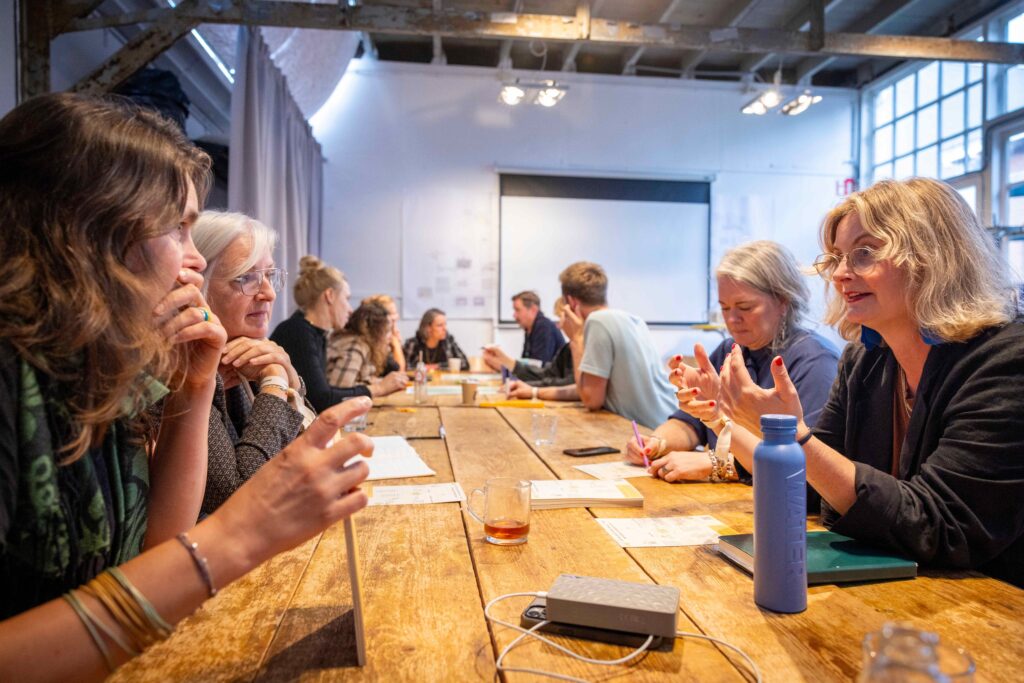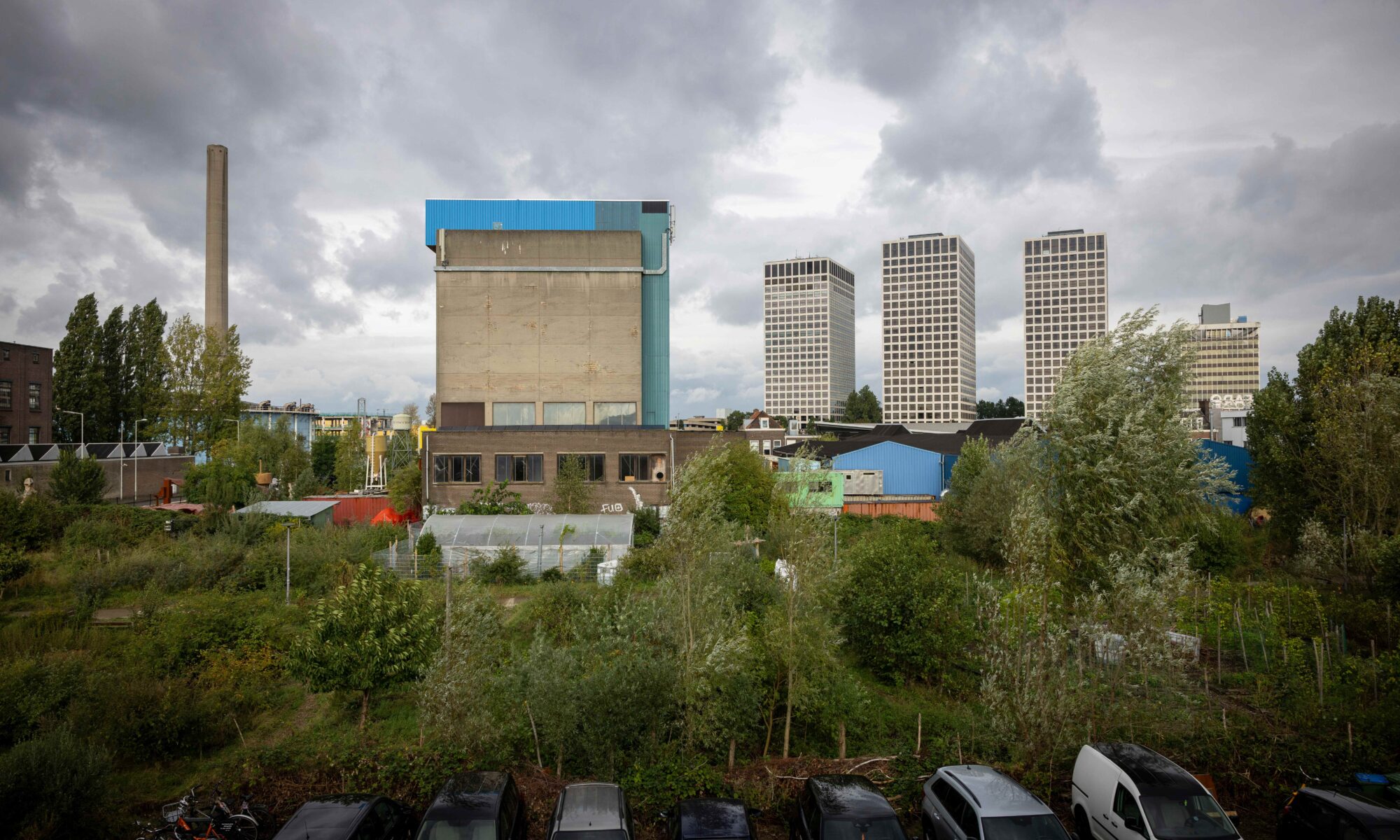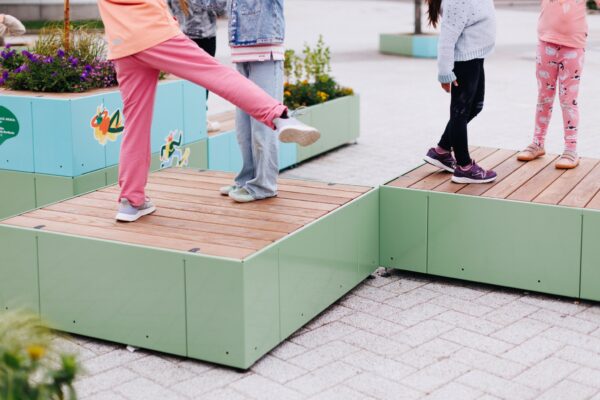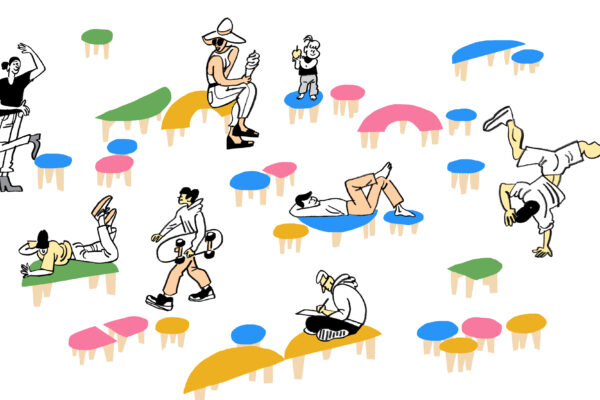“I believe the first step is fostering a culture of curiosity. When people are curious, they’re more likely to be imaginative, and when they’re imaginative, they’re more likely to be creative and come up with new ideas and innovations. It all starts with curiosity.”
Charles Landry
Placemaking Week Europe 2024 was held in Rotterdam, bringing together more than 700 placemakers, urbanists, city officials, and community leaders from over 80 countries. Since its inception, the annual festival has grown into a key event in the urbanism field, fostering exchange and innovation.
Over the course of 3.5 days, participants engaged in workshops, keynotes, talks, walks, and hands-on activities designed to share best practices, encourage collaboration, and explore the city’s spaces and initiatives firsthand. For our team, Rotterdam’s “city as a testbed” approach was truly inspiring. Cities must adopt bold, proactive strategies to tackle the urgent challenges of creating more liveable environments. Rotterdam exemplified this by embracing its historical layers while boldly shaping new ones – an ideal host that brought the event’s key themes to life.
“Time and time again, the city of Rotterdam has had to forge its own path and collectively build – from rebellious creatives to legislators, and from neighborhood leaders to project developers.”
Placemaking Europe
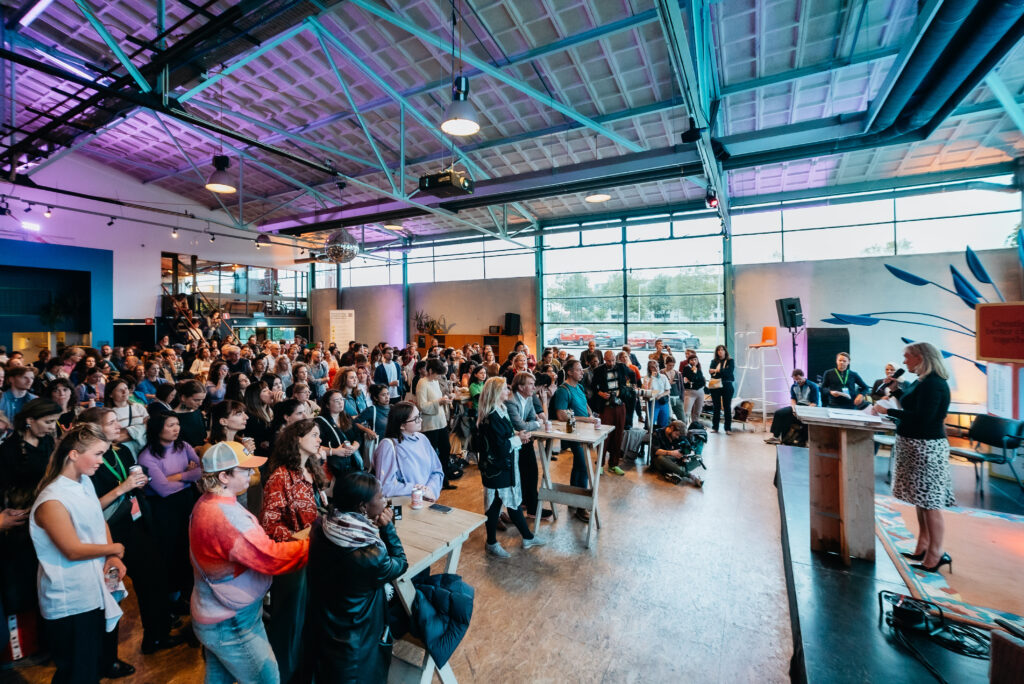
Interview with Charles Landry
During the event, we had the privilege of sitting down with Charles Landry, a long-time participant and contributor to Placemaking Week festivals. As an acclaimed author and advocate for the creative city approach, as well as the founder of the Creative Bureaucracy Festival, his insights were invaluable. His views and insights poignantly reflect on many of the topics discussed during the festival’s events and spirit of “yes, if” culture.
As Päivi Raivio (Parkly, RaivioBumann) and Charles sat outside the vibrant Keilepand venue, the conversation was accompanied by the background hum of chatter, people on the move, lively exchanges – and even a bit of thunder.
In your extensive and acclaimed career, you’ve worked across sectors as an author, advisor, founder of the creative bureaucracy movement, and advocate for creative cities. What drives you the most in your work?
I can sum it up in one word: curiosity. That’s essentially it. Of course, that sounds too generic, but if you’re doing the kind of work I do – whether exploring what makes a city creative or working within a city – you need to examine all the elements and resources around you and figure out what can be made of them, or how to rethink something, like a building. Curiosity about the “what if” is one of the main drivers. Another driving force for me is when people respond to my work – it’s encouraging, and that interaction pushes me forward. I’m also deeply interested in how other people live their lives. As I’m writing a bit of a memoir, it’s exactly about that: unheard voices, alternative perspectives.
I think my curiosity comes from reacting against my father and mother, who were always subdued by the system, complaining how the system was unequal and basically too often corrupt. My idea was, “What can I do? What’s the alternative?” – which led me to adopt a “glass half full” mindset. It’s not just about being nosey, but about having a deeper curiosity to try to understand how people think and how things work. It’s about discovery.
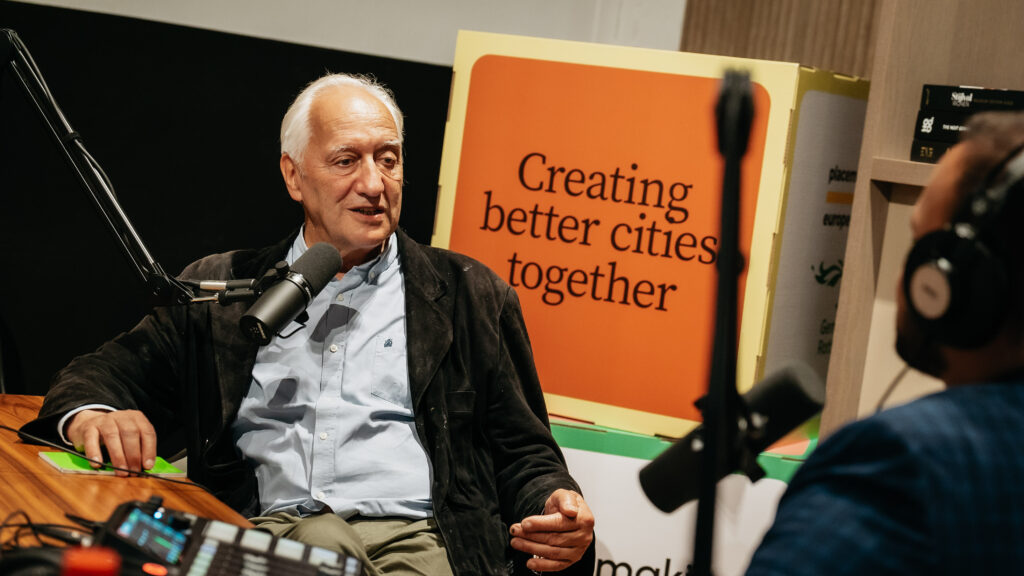
Curiosity is something that we naturally have as children – and it gets sort of downsized as we grow up. Curiosity is somehow linked to creativity, right?
When I first had the idea of the creative city, I was doing some work in a very poor area in the North of England. That’s when I realised you can’t just tell a kid whose parents are unemployed to “be creative.” You have to start by sparking their curiosity about something—whether it’s music or something else that interests them. Once you have their attention, you can explore further. They might not become a musician, but they could become a technician in the music field. It’s about discovering what people are interested in, and that connects to creativity. I believe the first step is fostering a culture of curiosity. When people are curious, they’re more likely to be imaginative, and when they’re imaginative, they’re more likely to be creative and come up with new ideas and innovations. It all starts with curiosity.
What is common for the concepts of creative city and creative bureaucracy?
They are very interwoven. The idea of the creative city began with exploring the potential of arts and culture, in a broad sense, to drive change. Then I noticed that whether we’re talking about social, business, or academic innovation, there’s always a public authority involved, forming part of an ecosystem. These elements hang together. What’s interesting is how intertwined they are – creative bureaucracy is a subset of the creative city. In all these sectors, you don’t need to be creative 24/7, but you do need to be open to reassessing things. The key to creativity is knowing when to be open and when to focus. At some point, you have to make something happen. So, after generating ideas, the next question is: how do you turn those ideas into reality? That’s where convergent and divergent thinking come into play.
“Tactical actions can serve as the R&D “department” of a city. We need a spectrum of approaches – from the very temporary to the solid – and temporary actions can prefigure the future.”
Charles Landry
What are the most pressing issues facing cities at the moment? What is your advice for cities who are tackling wicked problems?
The big challenges we face are often wicked problems, because nearly every issue is interconnected. This means you have to address them even without fully knowing how to define the problem itself. Wicked problems include things like climate change, soil erosion, rising sea levels, unemployment, and social isolation. To tackle them, you need to view things from a 360-degree perspective, which isn’t easy, and think in an integrated way. Sometimes, this approach can seem a bit abstract, and I hear that from time to time. You need a framework that helps unpack the issue. It might sound simple, but when you have a situation with high unemployment, climate anxiety, and people feeling powerless, it’s extremely complex.
Participation in solving these problems can be challenging because it often leads to “either/or” questions, and the diversity and complexity of issues are hard to grasp, as are the connections between different parts of the problem. While we need to address these problems, we also need to be able to clearly define them – and that’s something we don’t always do.
The other big problem is what do you actually do to create this transition. I sometimes say, the transition which we need to go through, is the biggest cultural project we have to go through, because it is about mindset, values, behaviour – all these cultural things. How can art do anything to help that? For example, retrofitting cities, something we need to do, can be unbelievably difficult to achieve.
We work in public spaces, focusing on urban transformations and tactical actions through flexible, modular furniture tied to systems thinking and creative bureaucracy. How do you see solutions like Parkly having potential in shaping urban environments and cities?
I believe there hasn’t been enough change in our cities. Often, when people talk about systems thinking, the system itself stays largely the same. For instance, the slogan of creative bureaucracy asks how we move from a “no, because” mindset to a “yes, if” culture. If more people adopted that approach, we’d be more open-minded. As I mentioned, the creative city concept is rooted in a “glass half full” perspective. Tactical actions are useful, but the question is, how do we embed them into the mainstream? If you were a company, you’d always have a research and development department for experimentation and trying new things. In a city, you don’t have that, but tactical actions can serve as the R&D “department” of a city. We need a spectrum of approaches – from the very temporary to the solid – and temporary actions can prefigure the future. They give people a sense of what could be, embodying the “yes, if” culture.
What does an ideal future city look and feel like?
An ideal future city copes with the different balances between things that give you awe and the small, everyday details. It can be both vibrant and quiet at the same time. It’s all about harmonizing these aspects. In terms of vision, it includes diverse housing options, relative equality, and minimal division within society. Aesthetically, it has depth and layers that reflect its complexity and inclusiveness.
Read more about Charles’s work and the creative city concept:
https://charleslandry.com
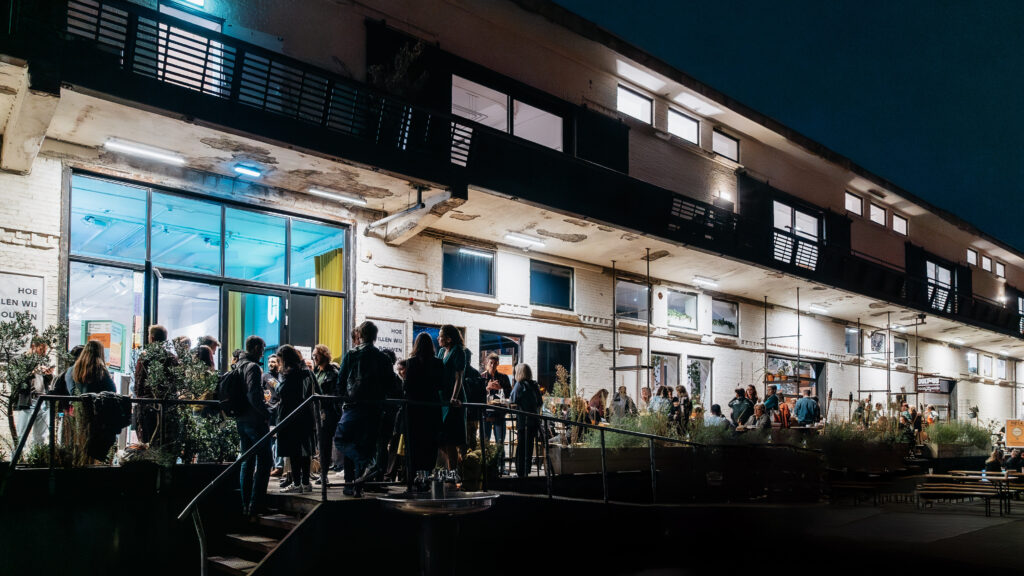
What is a City as a Workplace?
Team Parkly & RaivioBumann represented by Päivi Raivio and Daniel Bumann, actively participated in multiple sessions, joined panel discussions, and hosted a workshop. From Nordic Placemaking: Collaborating Beyond Borders to Empowering Urban Change Through Community-Driven Storytelling, the discussions were lively, inspiring, and full of takeaways!
The Co-Creating Social & Green Places for Outdoor Work workshop, facilitated together with Ioana Biris, founder of Outdoor Office Day movement, brought together municipal planners, leaders, and designers to tackle the challenge of designing cities that support working life through social, green spaces and access to nature, while energising the urban environment.
The workshop began with brief presentations by Ioana, Daniel, and Päivi, followed by an engaging three-part session exploring the why, how, and where of planning and implementing more inviting outdoor spaces for various types of work life. This included everything from remote work setups to rest areas for food couriers and relaxing green spaces for hospital staff, among other examples.
While urban spaces for work and study are often overlooked, this session explored cities from a fresh perspective – focusing on public space networks, social connections, wellbeing, and the idea of a connected city. Ideas ranged from visual routes to the city’s green spaces, open pod-like spaces to creating more semi-public spaces – all contributing to a more cohesive urban environment and inclusive city.
We’ll soon compile the key insights into a handbook in collaboration with Parkly and Nature Desks. Stay tuned!
